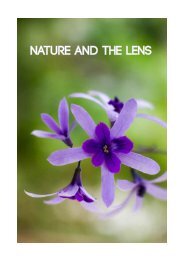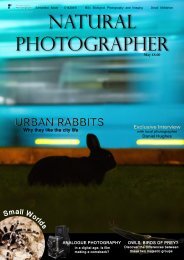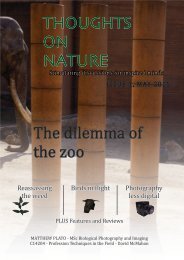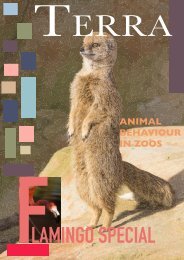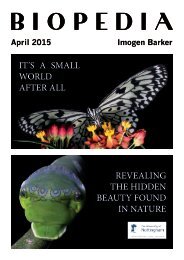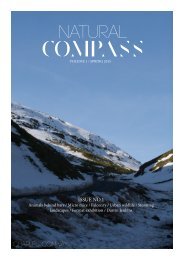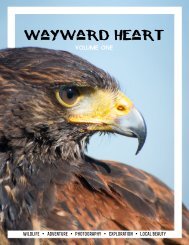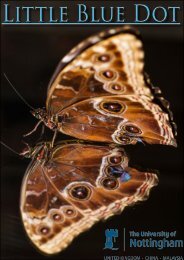Saving Wild Cats
You also want an ePaper? Increase the reach of your titles
YUMPU automatically turns print PDFs into web optimized ePapers that Google loves.
A Closer Look at<br />
Fig 45: Lantana camara displaying unpollinated<br />
yellow flowers and pollinated pink flowers.<br />
COLOUR<br />
Macro photography allows us to capture a subject and view<br />
it at a 1:1 ratio. Some lenses enable you to view a magnified<br />
image of up to five times the actual size and therefore allows<br />
us to notice details we wouldn’t be able to see with the<br />
naked eye. Macro photography not only creates potentially<br />
beautiful images but also plays an important role in science<br />
by allowing people to view small subjects such as insects in<br />
a way they haven’t before. This leads to new perspectives,<br />
sparks interest and curiosity, and facilitates learning.<br />
The use of digital cameras can also improve research<br />
methods in colour analysis of insects and plants.<br />
Traditionally a spectroadiometer would be used to analyse<br />
and record the wavelengths at which an object reflects light.<br />
This piece of equipment however is not only expensive<br />
but also takes an average of reflected light. This can lead to<br />
inaccuracies in recreating colour in way that humans and can<br />
comprehend.<br />
As well as the difficulties in recreating colour, descriptions<br />
of colour by researchers may also lead to inaccuracies.<br />
Colour description may vary between different cultures and<br />
languages. There is also the problem of colour blindness<br />
in some individuals and slight differences in the pigments<br />
absorbed by the cones present in our eyes, all of which make<br />
colour perception a subjective matter. By capturing images<br />
using digital SLR cameras, the pixels that make up an image<br />
can be analysed for their components of red, green and<br />
blue (RGB). By recording these components, colour can<br />
be recreated accurately and consistently for use in animal<br />
behaviour studies. Using macro lenses can further enhance<br />
this process as they allow colour differences to be detected in<br />
areas made up of just a few pixels.<br />
Lantana camara<br />
Lantana camara is a tropical plant originating in South America that is now widely distributed throughout the<br />
rest of the world. As a result of hybridisation it now exists in many different forms with variances in flower colour.<br />
Flowers are usually yellow when they first open and change to pink, white or red after pollination. This change in<br />
colour acts as a visual cue to butterflies and other insects, indicating that the flower has already been pollinated.<br />
Colour change in response to pollination is beneficial to both the plant and insect. It permits the plant a more<br />
impressive, attractive flower display whilst enabling insects to forage more efficiently by avoiding plants that have<br />
reduced nectar.



